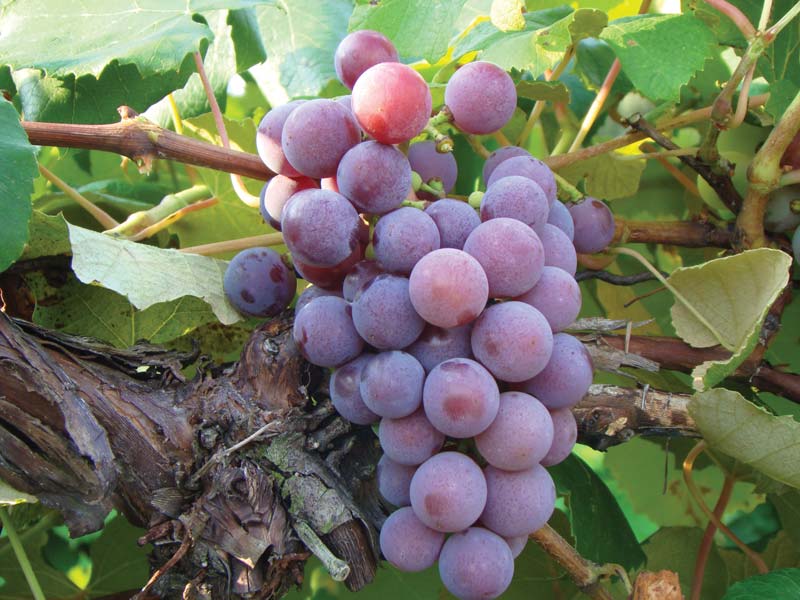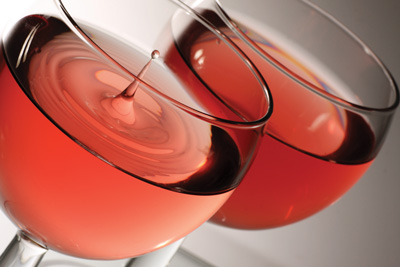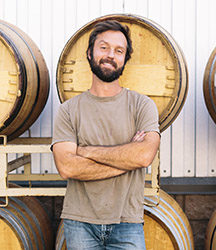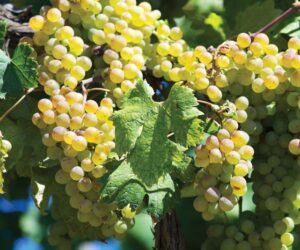
Winemaking in North America did not start out the way we know of it in modern times. In fact, over the four hundred years or so that the continent has been occupied by European immigrants, winemaking has morphed so much it is hard to pin down if there was ever an origin.
The short story is as the European settlers arrived, they did not take a keen interest in the grapes native to the land. Being accustomed to the Vitis vinifera species of grape, on subsequent journeys across the Atlantic Ocean the Europeans carried with them cuttings from their favorite vinifera varieties from their home country.
The longer, more intriguing story is their trials and tribulations with the varieties they found here, how they came and went, and, to some extent, still linger on. Today we discuss a grape with historically synonymous names such as Arkansas, Michigan, Cherokee, and Lincoln. Surely this conjures up an image of what could truly be called America’s grape. So when it was officially named, it was for one of the original places it was grown and that title has stuck to this day — we know of it as Catawba.
Catawba’s Origins
This light-bodied red grape is viticulturally limited to North America. It had its heyday from 1825 to around 1850 as North America’s most widely planted grape variety. In 1859, the Ohio wine industry produced more than 568,000 gallons (21,500 hL) of wine that was grown on about 2,000 acres. In the 1860s a powdery mildew outbreak and the American Civil War led to somewhat of a decline. Over the years, it has fallen into less favor due to its late ripening and unsuitability for high-quality, dry red wines. Nonetheless, it has an interesting backstory.
While the historical record of Catawba does not go back to the Mayflower, the 220 or so years of viticultural documentation in North America is pretty significant. In 1801, Samuel Murray had an inn just south of Asheville, North Carolina, somewhere within Henderson County near the South Carolina border. Mr. Murray had found several grapevines growing in the woods and as he cleared trees, he noticed over time that one of them had developed exceptionally well when it started receiving more sunlight. He took cuttings of this vine and planted them on his farm.
A few years later, in 1807, former Governor of North Carolina General William R. Davie, transplanted some of these vines to his residence along the Catawba River near Rock Hill, South Carolina. This was not too far from where Mr. Murray lived. Sometime between 1807 and 1816, the General took the variety and started to propagate it with friends in Washington, D.C. and Maryland. It was there he named it Catawba after the river it was brought from.
While the historical record of Catawba does not go back to the Mayflower, the 220 or so years of viticultural documentation in North America is pretty significant.
The first wines made from Catawba were recorded in 1822 in Georgetown, Washington, D.C. by Major John Adlum. Major Adlum sent cuttings to Cincinnati, Ohio, where Nicholas Longworth developed and popularized Catawba’s cultivation in the “West,” as it was known then, since the frontier did not go much further past there at the time.
The story of how Catawba came to be in North America is pretty interesting, but as with most varieties, teasing the actual origins of it has proved to be problematic over the years. In Jancis Robinson’s Wine Grapes (2012), she proposes three possible scenarios: 1) It is a pure, wild Vitis labrusca variety 2) It is a natural hybrid of V. labrusca and V. aestivalis and 3) It is a natural seedling produced by a cross between native V. labrusca and V. vinifera that had been previously imported into the United States.
In the absence of actual breeding records, she proposes this as an accidental cross by vinifera pollen being carried on the wind and pollinating a wild labrusca, where the seeds were consumed and deposited near Mr. Murray’s inn. Quite the set of stories, with the last one, almost unbelievable without some backstory that was not published.
The geneticists came through a few years later (2016) and actually corroborated Robinson’s third possibility, showing that Catawba shared one allele with Sémillon. Incidentally, the same research project confirmed previous research that found Concord to be the offspring of Catawba and another wild species.
Catawba In The Vineyard
These cold-hardy grape vines can withstand temperatures to -15 to -20 °F (-26 to -29 °C). They are moderately vigorous and the clusters are medium to large in size, with intermediate-sized berries. The skins are rather thick, which is typical of the native American slip-skin varieties (slip-skin is a term that describes the skin of some native American grapes, that when the berry is squeezed, the skin slips off of the fleshy part of the berry). They are quite productive and some growers recommend cluster thinning. It requires favorable sites with long growing seasons and may ripen too late for some areas. Bloom to harvest is reported as about 120 days.
It is reported to have high susceptibility to black rot, downy mildew, and Phomopsis; with moderate susceptibility to powdery mildew; and only slight vulnerability to Botrytis, crown gall, and Eutypa die back. It is not sensitive to sulfur but can be sensitive to copper treatments if applied under cool, slow-drying conditions.
Catawba In The Winery
The grape is versatile; being made into wine, jams, juice, and is sold as a table grape. Focusing on the wine aspects, certainly all styles are possible but lighter reds and rosés finished semi-dry are the norm. Ice wines are also made in areas where the conditions are favorable. The pigmented anthocyanins are reported to be low, which is why the wines of Catawba are generally light in color. In addition, there is a mutation that is even lighter in color and aptly named Catawba Rosé.
Thermovinification is a commercial process where the must is heated prior to pressings and fermentation that can help with the color extraction, but can also have a negative effect on the flavors. While not available to the home winemaking crowd, there are certainly those adventurous and experimental home winemakers who would want to break out their pressure cookers to give this method a try.
Sparkling Catawba appears to have come into production using the same techniques made famous by the French monk and winemaker Dom Perignon in the Champagne region of France. In 1842 Nicholas Longworth started producing wines in the same méthode champenoise style along the banks of the Ohio River. While this sparkling winemaking process is a little bit more complex, it is not out of reach for home winemakers. The disgorging process can be a little challenging and dangerous if not performed correctly. Search winemakermag.com for guidance on how to craft the style of sparkling wine yourself.
Commercially I know of a few modern day wineries that are producing a pét-nat, short for pétillant naturel, style of sparkling in a couple of different ways. The process involves bottling the wines under crown-cap before the end of fermentation, typically when the residual sugar levels are 10–15 g/L (read more about this technique in “Pét Projects” in the June-July 2021 issue or online at https://winemakermag.com/article/pet-projects).
One winery I am familiar with producing pét-nat wines takes on the traditional riddling and disgorging process, whereas the other simply allows the lees to settle to the bottom of the bottle and then you decant the wine when opening to another bottle just as you would a homebrewed beer. You do need specialized glass bottles capable of holding high pressures without exploding. This style seems a good fit if making a sparkling Catawba wine.
For me, I have to think that this is the oldest North American wine grape variety I have researched. As I reflect on the history of this grape, I picture a whole bunch of home winemakers aspiring to go commercial and getting this grape first and foremost in the early American wine industry. Catawba morphed to Concord, which took over in more ways than imagined. But in the end there is the right variety for the right site and it was Catawba that set the tone and helped shape the United States’ history in grape growing and wine production. While not as lengthy a history as you find in the Old Country . . . we had to start somewhere.
Catawba Rosé Recipe (Yield 5 gal./ 19 L)

Ingredients
- 125 pounds (57 kg) fresh Catawba fruit
- Distilled water
- 10% potassium metabisulfite (KMBS) solution (Weigh 10 g KMBS, dissolve into about 50 mL of distilled water. When completely dissolved, make up to 100 mL total with distilled water.)
- 5 g Lalvin 71-B yeast (Lalvin K1-V1116 or EC-1118 can be used as a substitute)
- 10 g Diammonium phosphate (DAP)
- 10 g Fermaid K (or equivalent yeast nutrient)
- Rice hulls
Equipment
- 15-gallon (57-L) food-grade plastic bucket for fermentation
- 6-gallon (23-L) bucket
- 6-gallon (23-L) carboy
- 5-gallon (19-L) carboy
- 1–2 one-gallon (3.8-L) jugs
- Racking hoses
- Destemmer/crusher
- Wine press
- Inert gas (nitrogen, argon, or carbon dioxide)
- Ability to maintain a fermentation temperature of 55–60 °F (13–16 °C) TIP: Prior to harvest, buy several one-liter bottles of water, drink the water, replace with distilled water, and freeze. This will be your refrigeration system for peak fermentation. If you have other means to keep things cool, of course use that.
- Thermometer capable of measuring between 40–110 °F (4–43 °C) in one degree increments
- Pipettes with the ability to add in increments of 1 mL
Step by Step
- Clean and sanitize all your winemaking tools, supplies, and equipment.
- Crush and destem the grapes. Transfer the must to your fermenter.
- During the transfer, add 15 mL of 10% KMBS solution. This addition is the equivalent of 50 ppm SO₂. Mix well into solution.
- Layer the headspace with inert gas and monitor every 2–3 hours for color development. When the desired color is achieved, press the must. Use the rice hulls (about 30% of the total volume) to aid in pressing and make the process go faster. You will be discarding the skins, seeds and hulls, then proceed with the juice as follows.
- Press the grapes, collecting the juice in the 6-gallon (23-L) bucket. Add 8 mL of 10% KMBS solution. This addition is the equivalent of 20 mg/L SO2. Move the juice to the refrigerator.
- Let the juice settle at least overnight. Layer the headspace with inert gas and keep covered. (Place dry ice in and cover.)
- When sufficiently settled, rack the juice off of the solids into the 6-gallon (23-L) carboy.
- Prepare yeast. Heat about 50 mL distilled water to 104 °F (42 °C). Sprinkle the yeast on the surface of the water and gently mix so that no clumps exist. Let sit for 15 minutes undisturbed. Measure the temperature of the yeast suspension. Measure the temperature of the juice. You do not want to add the yeast to your cool juice if the temperature of the yeast and the must temperature difference exceeds 15 °F (8 °C). To avoid temperature shock, acclimate your yeast by taking about 10 mL of the juice and adding it to the yeast suspension. Wait 15 minutes and measure the temperature again. Do this until you are within the specified temperature range. Do not let the yeast sit in the original water suspension for longer than 20 minutes. When the yeast is ready, add it to the fermenter.
- Add Fermaid K or equivalent yeast nutrient.
- Initiate the fermentation at room temperature ~(65–68 °F/18–20 °C) and once fermentation is noticed, ~24 hours, move to a location where the temperature can be maintained at 55 °F (13 °C).
- Two days after fermentation starts, dissolve the DAP in as little distilled water required to completely go into solution (usually ~ 20 mL). Add the DAP solution directly to the carboy. Do not add the DAP crystals to the juice unless you want to recreate those volcano experiments from elementary school days.
- Normally you would monitor the progress of the fermentation by measuring Brix. One of the biggest problems with making rosé or white wines at home is maintaining a clean fermentation. Entering the carboy to measure the sugar is a prime way to infect the fermentation with undesirable microbes. So at this point, the presence of noticeable fermentation is good enough. If your airlock becomes dirty by foaming over, remove it, clean and sanitize it, and replace as quickly and cleanly as possible. As a general rule, sanitize anything that will come in contact with the juice.
- Leave alone until bubbles in the airlock are about one bubble per minute. Usually about two to three weeks.
- Measure the Brix. The wine is considered dry, or nearly dry, when the Brix reaches -1.5 °Brix or less.
- When the fermentation is complete, add 3 mL of fresh KMBS (10%) solution per gallon (3.8 L) of wine.
- Transfer the wine off of the lees to the 5-gallon (19-L) carboy and lower the temperature to 38–40 °F (3–4 °C). Make sure there is no headspace. Fill the carboy to the very top! If you have leftover wine, you might as well have this for dinner if there is not enough to fill a 1-gallon (3.8-L) jug.
- After two weeks, test for pH and SO2 adjust as necessary to attain 0.8 ppm molecular SO2. (There is a simple SO2 calculator on the Web at www.winemakermag.com/guide/sulfite). Check the SO2 in another two weeks, prior to the next racking and adjust while racking. HINT: Rack to another sanitized 5-gallon (19-L) carboy or your bucket. In the case of the latter, clean the original carboy and transfer the wine back to it. This is done at about 4–6 weeks after the first SO2 addition. Once the free SO2 is adjusted, maintain at the target level by monitoring every 3–4 weeks.
- Consult winemakermag.com for tips on fining and filtration if a cloudiness is apparent.
- At about three months you are ready to bottle. Consider making it into a sparkling wine. Be sure to maintain sanitary conditions while bottling. Once bottled, you’ll need to periodically check your work by opening a bottle to enjoy with friends.







